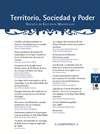Abstract
Resumen: El monasterio de San Pelayo de Oviedo es un ilustrativo ejemplo de monasterio benedictino femenino, cuyos orígenes fueron objeto de una elaboración legendaria que los vincula al monarca asturiano Alfonso II , pero que sin embargo surge y se consolida tras un largo proceso en el que tendrán un activo papel mujeres de la aristocracia asturleonesa, incluidas algunas de las familias reinantes entre los siglos x y xii. En efecto, Teresa Ansúrez, esposa y madre respectiva de los monarcas Sancho I y Ramiro III , se establece en Oviedo, a todas luces impulsada por motivos políticos, y al mismo lugar traslada los restos mortales del adolescente Pelayo, ejecutado en Córdoba por mandato de Abderramán III . La reina se integra en la vida monacal ovetense, así como otras mujeres, algunas de reconocida procedencia aristocrática, se irán añadiendo sucesivamente al grupo y pasándose el relevo de la custodia del cuerpo del mártir; de manera que, a la postre, el monasterio de monjas de San Pelayo logrará su consolidación disciplinaria y señorial a la vez que los otros centros eclesiásticos que también se habían dado cita en la colina de Oviedo, el monasterio de varones de San Vicente y la sede episcopal de San Salvador.
Palabras clave: vida monástica, nobleza, poder, mujer, León, Oviedo, Asturias.
Abstract: The monastery of St Pelayo of Oviedo has had an interrupted history from Early Middle Ages, but its origins are obscure outlines, perhaps because they are surrounded by legendary traditions that were formed in the 12th century. Those legends connect the above mentioned monastery with Alfonso II the Chaste (791-842), his supposed sister Xemena and his, also supposed, nephew Bernardo of Carpio, a wellknown hero from the medieval epic. The rare and laconic archaeological sources endorse the hypothesis about a very ancient medieval Oviedo, that would be linked to a late Roman population. The monastery of St Vicente and the cathedral of St Salvador appear in this area, the latter being surrounded by some other small monastic churches that will go on disappearing in the long term. The death of Ramiro III de León (985), after three years of civil war against Vermudo II , forces the exile of Teresa Ansúrez, Ramiro’s mother and already Christi ancilla, to Oviedo, because she had not succeeded in putting her grandson, Ordoño Ramírez, on the León throne. Teresa takes the remains of martyr Pelayo (952) whit her. In fact, those relics had been previously moved from Córdoba to León by the good relations of her family, of her husband Sancho I above all. The Queen sets herself up in the monastic church of St John the Baptist and St Pelayo, in the town that had been the seat of the ancient kingdom of Asturias. Moreover, same important persons fallen in political misfortune go with her and live more monastico in Oviedo with her. In fact, Queen Velasquita, Vermudo II ’s repudiate wife, goes to Oviedo too. Likewise, Queen Teresa, from her retreat, would support or look at with kindness the rebellions from same knights against the king Vermudo II . All thus indicates that Queens Teresa and Velasquita agree on political issues, because Ordoño Ramírez, Teresa’s grandson, marries Christina, Velasquita’s daughter. Perhaps Teresa Ansúrez attempted to set up one political platform of confronting the Asturian area, the ancient centre of the Asturian Kingdom, with the same court of León. Whatever it was that happened, in 11th century one very important family, faithful to the León kings, have an increasingly important role in Oviedo. They are count Gundemaro Pinioliz and his wife, countess Mumadona, who promote monastic life in the western area of Asturias and in Oviedo too, where Gontrodo Gundemariz, the count’s daughter and the countess’s stepdaughter, is a nun. Moreover, the alliance can be observed, around Mumadona, of persons of the Vermudo II ’s two lineages: Christina, daughter of the King and of his first wife Velasquita, and Teresa, of the second wife, the Castilian Elvira. Teresa had moved back to Oviedo after her marriage with the Moslem king of Toledo. And yet from the problematic documentary sources, the complex process of consolidation of monastery of St Pelayo and its independence from the male ecclesiastical institutions of Oviedo, the see of St Salvador and the monastery of St Vicente, can be glimpsed. Gontrodo Gundemariz will be abbess of St Pelayo and she will be followed by other noblewomen of her family, who will succeed to the abbatial position. Thus, the final result is the emencipation of the female monastic life in Oviedo, in the monastery of St Pelayo, that since the late 11th century will achieve both increasing territorial as well as jurisdictional rule.
Keywords: monastic life, nobility, power, woman, León, Oviedo, Asturias.

